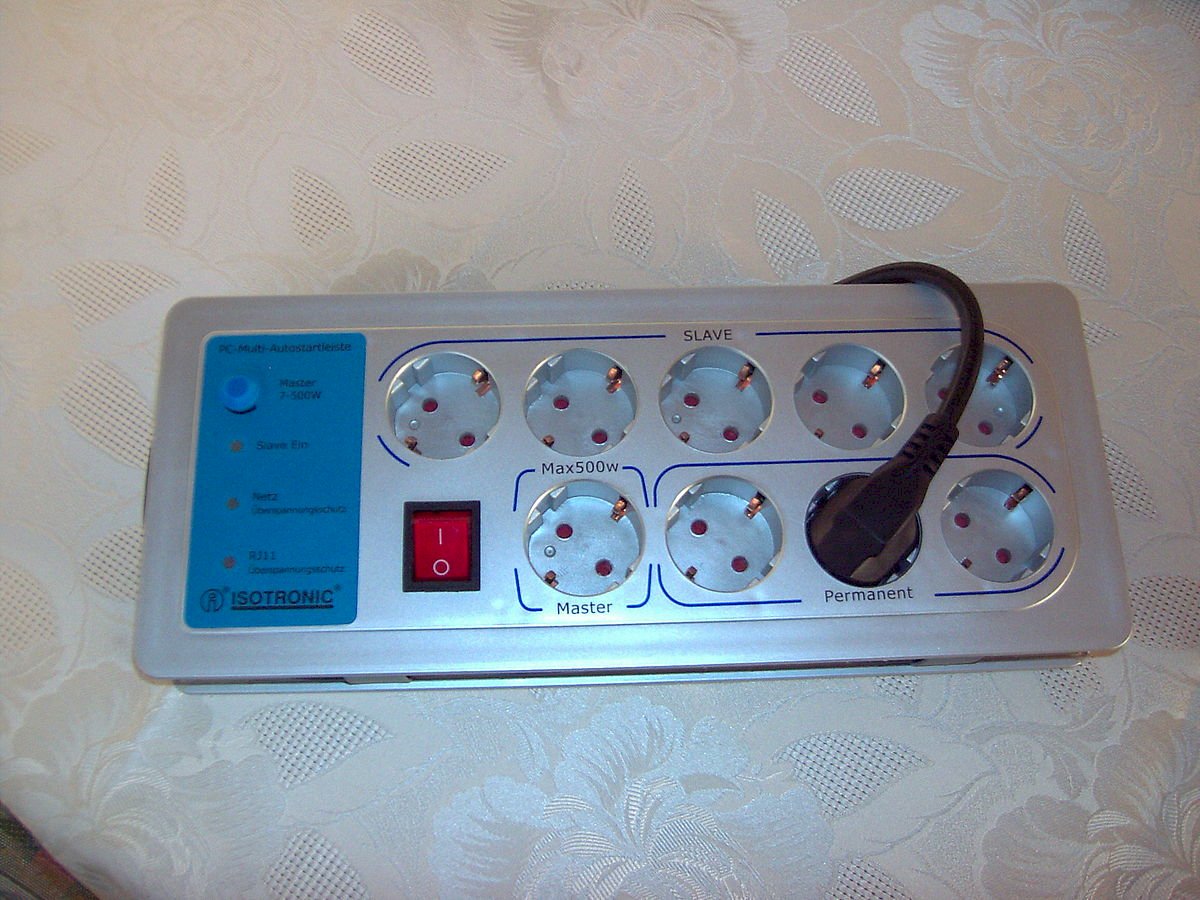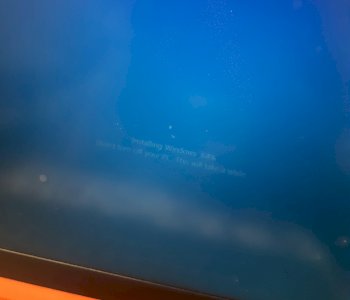Multiple socket with switch?
I have a question and that is. I have connected my TV, receiver, laptop to a multiple socket, this has an on / off switch with LIGHT and the question now is it saves more electricity with sockets when I switch them off after need or when I light my TV with standby, receiver with time display, laptop with lights plug in when the power is on (and the laptop switch turns off when it is disconnected from the power supply), please also fill out the survey👍
I almost only have smart home sockets and they simply switch on / off automatically under certain conditions. For example, when I leave the house, something like the TV always switches off completely…
Yes, that saves electricity.
But holds up m.M.n. Within limits, since the standby consumption of modern devices is relatively low. I accept it out of convenience and end up paying a little more.
But what I really use is a master-slave power strip. This saves energy and can still be lazy.
What is a master slave socket

https://de.m.wikipedia.org/...-Steckdose
When a particular device is turned on, the power strip also supplies power to the rest of the devices. If it is switched off, the other sockets will be deactivated.
Example: PC is on, loudspeakers and monitors are receiving power. PC is off, loudspeakers and monitors are no longer receiving power.
Automatic switch-on?
So if I turn on the PC now, for example, the desktop printer turns on, doesn't it?
I agree.
Cool, thanks!
Got it for my birthday sometime.
I would switch it off, but I have connected my digital clock there, which switches off when it runs out of juice. Then I have to put it right again and do it every time after I've switched off the multiple plug is a bit too much unnecessary work for me
I have several variants of power strips:
For my desktop PC I use a master / slave power strip that switches all external devices off and on when the PC shuts down or is started. (=> Monitor, speakers, active USB hub, …)
Then I distributed several conventional (switchable) headers of different lengths in my apartment.
However, I never disconnect my SmartTV from the electricity. Also (of course) not my hard drive HD receiver.
And some SmatTVs may not even be disconnected from the power grid.
OLED TVs in particular regularly go into a kind of "cleaning" or "recovery mode" in order not to overload the organic LEDs. Otherwise, this expensive OLED TV could be seriously damaged.
The same applies to inkjet printers.
After a "cold start", these carry out a function test in which some ink is always flushed through. And that can empty the expensive cartridges relatively quickly without any benefit.
And I have a (switchable) socket strip, the connections of which can also be switched individually. Small consumers in particular (power packs and chargers) depend on this, and I only supply them with power when needed and in a targeted manner.
My old notebook is also attached to this special connector.
You just have to find a sensible combination for your needs.
Depending on what you use for devices, you can save a lot of electricity if you take them completely off the grid. However, the opposite of good is often well meant.
it is often the case with devices such as tv that they no longer have a high standby consumption. It is almost not worthwhile to always turn the bar off. Last but not least, because the power supply is also good if you switch it off and on again.
it is even more blatant with inkjet printers. Every time they are taken off the grid, they go through a cleaning cycle to be on the safe side, so that you usually pay more than once in ink for what you saved in terms of electricity by switching them off.
lg, anna
PS: a short calculation example: a reciver and a TV on a multiple connector strip with a switch: each of the devices has a standby power consumption of one watt and is taken from the network for around 10 hours a day.
that would then be 365 days of 10 hours each, i.e. 3650 hours times two watts, are 7300 watt hours, or 7.3 kWh, which corresponds to electricity for around 2 euro that can be saved a year. For this, however, it is effectively the case that the devices have a shorter life expectancy.
Would you plug your watch into a different outlet if possible?
Not at any price, so it is in pretty good shape where it is. I have another socket available, but the clock would be on my closet and I would practically not be able to see it, let alone use it. However, if I had a power outlet that I could plug in the watch without having to change its position too much, I would probably do that.


